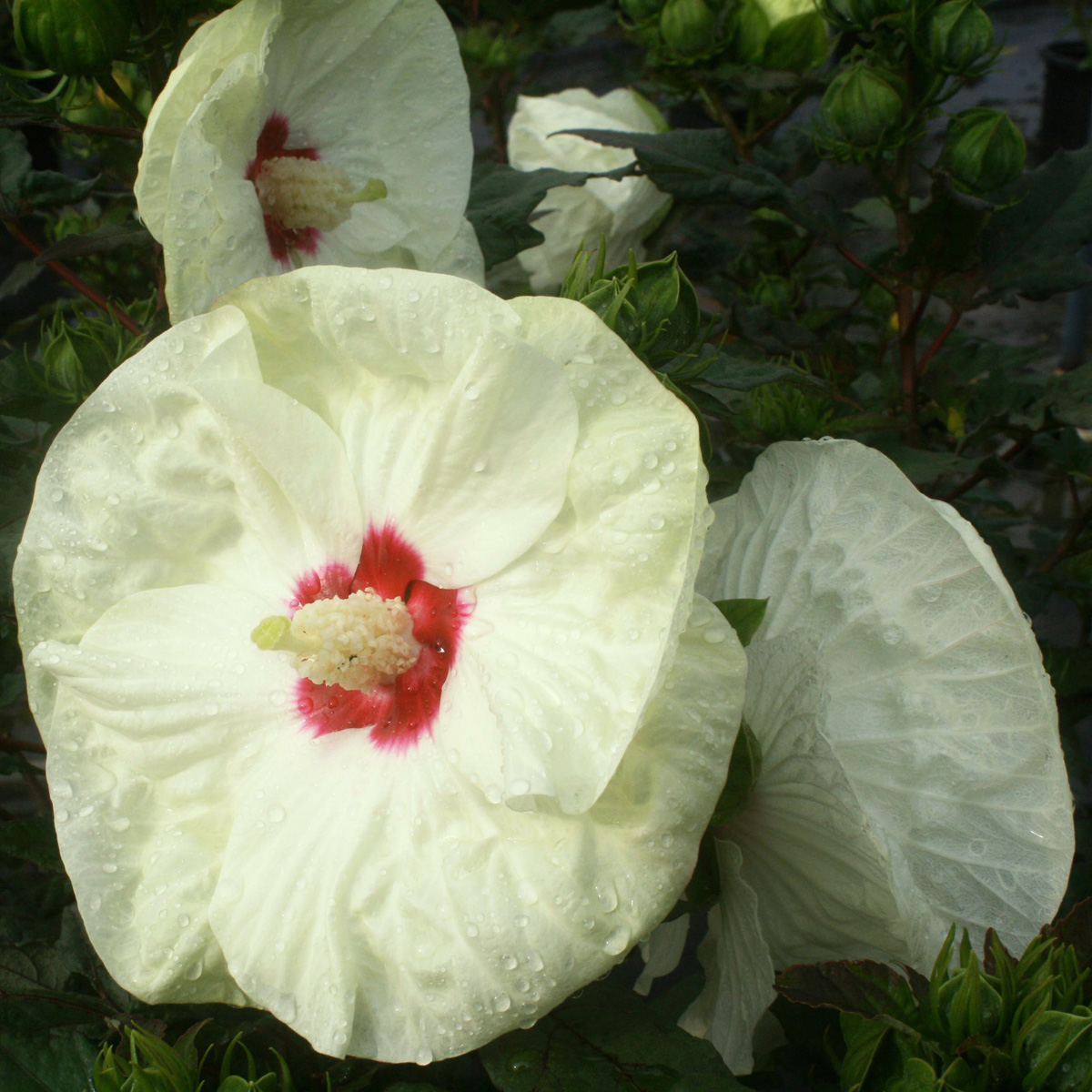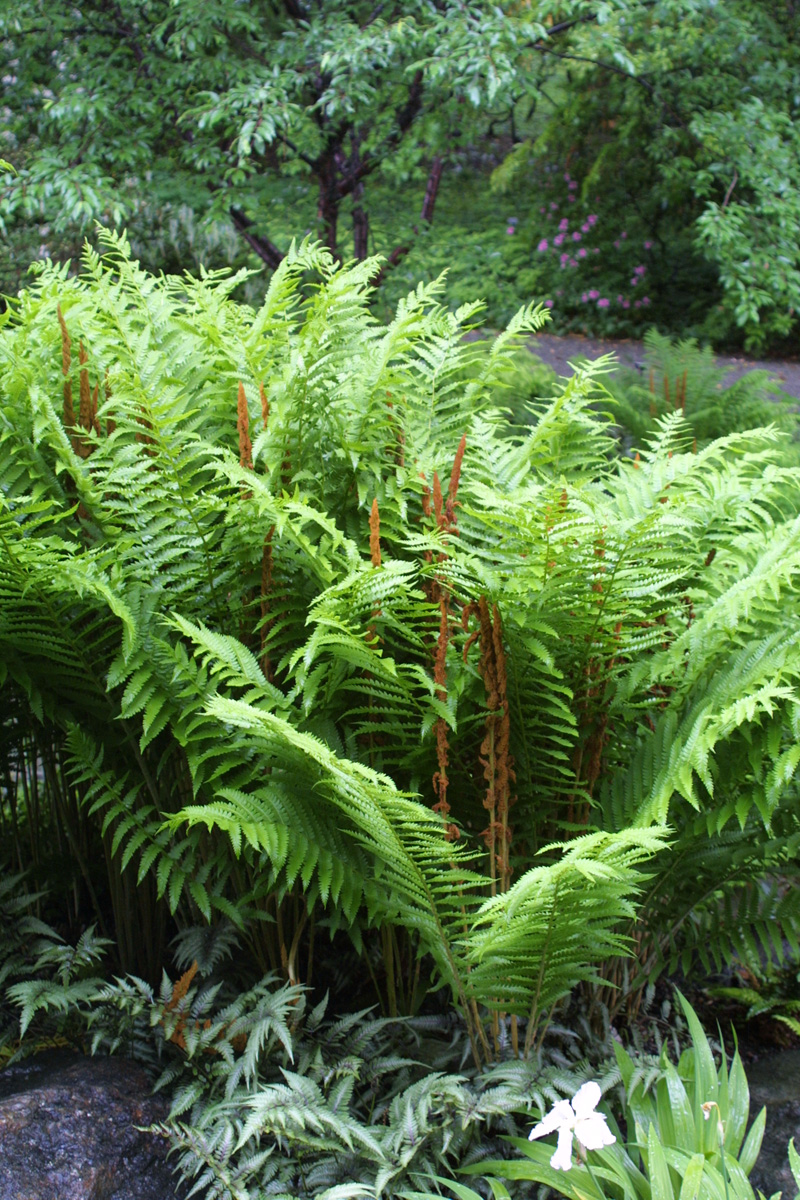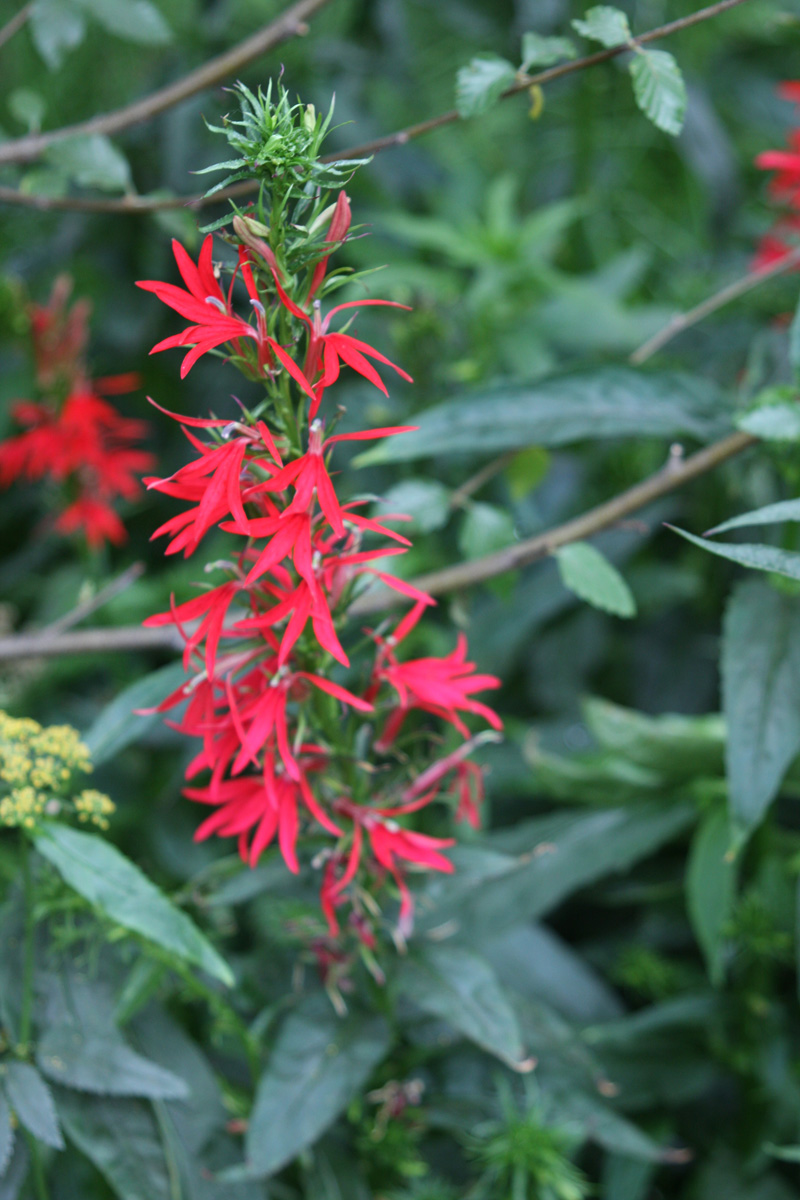High humidity is one of the Southeast’s cornerstones, right there with country music and sweet tea. While gardeners have learned to wear its dewy sheen like a badge of honor, humidity can take a toll on the plants in our gardens. Fungus and disease can run rampant without proper airflow, and arid-loving perennials like lavender (Lavandula spp. and cvs., Zones 4–10) and Russian sage (Salvia yangii syn. Perovskia atriplicifolia, Zones 5–9) can simply melt away in our wet summers. If you’re struggling to find plants that will not only tolerate high humidity but thrive in it, start with these plants.

‘French Vanilla’ hibiscus
Hibiscus ‘French Vanilla’, Zones 4–9
Despite looking like a plant from the tropics, hardy hibiscus (Hibiscus moscheutos and cvs., Zones 4–11) can be hardy down to Zone 4. In summer, these perennials show off enormous, dinner plate–size flowers in all shades of pink, red, and white. At only 42 to 48 inches tall at maturity and equally as wide, ‘French Vanilla’ hibiscus from the Summerific® series is one of the more compact varieties, yet it sacrifices nothing in the bloom department. Its ruffled, eggshell-colored flowers measure 7 to 8 inches in diameter and are only made more noticeable by the backdrop of dark green foliage.
There are a few things to know before growing ‘French Vanilla’ hibiscus in your garden. While it will adapt to average garden soil, hardy hibiscus thrives in moist to wet soil, soaking in as much sun and humidity as possible. These deciduous perennials die back each year, leaving only a skeleton of hollow stems behind. You should leave these stems untouched for winter and then cut them back to a few inches from the ground after the threat of frost has passed. Hardy hibiscus is notoriously late to emerge, so don’t panic if you don’t immediately see life signs in spring.

Cinnamon fern
Osmunda cinnamomea, Zones 3–9
With a generally high tolerance for humidity and rainfall, ferns are among the best plants for shade gardens in the humid Southeast. One excellent example is cinnamon fern, which is native to most of the eastern United States. Cinnamon fern gets its name from the prominent upright fronds that emerge gold in spring and deepen to a beautiful toasted brown. It is a long-lived perennial that usually grows around 36 inches tall but can eventually reach 48 or even 60 inches tall when happy. This is one of the few ferns that can handle sun with sufficient moisture, but it performs best in partial shade. It’s a prime candidate for growing under tree canopies—even black walnut trees (Juglans nigra, Zones 4–9)—where other plants might struggle. Cinnamon fern thrives in moist to wet, well-draining soil. It slowly spreads by underground rhizomes, which can be dug up every few years and divided to make more plants.

Cardinal flower
Lobelia cardinalis, Zones 3–9
Cardinal flower (Lobelia cardinalis, Zones 3–9) is native to every state in the Southeast, where it can be found growing in stream banks, swamps, and other naturally moist areas. Our humidity poses no challenge for this plant, which thrives in wet soil and can even tolerate occasional flooding.
While cardinal flower doesn’t attract cardinals, it does attract hummingbirds and butterflies in droves, making it a popular ornamental plant. At approximately 4 feet tall and 2 feet wide at maturity, it’s useful for the middle of the border and low spots that collect moisture. It tends to be short-lived but will continue to reseed itself when happy, prolonging its presence in your garden. Full sun is suitable in northern climates, but it will appreciate afternoon shade here in the South.

‘White Ladies’ Japanese iris
Iris ensata ‘White Ladies’, Zones 3–9
Japanese iris adapts easily to our humidity in the Southeast. This water lover spreads by rhizomes to form small colonies at the edges of ponds and creeks, even growing in shallow standing water for brief periods.
There’s no shortage of beautiful Japanese irises on the market, but I appreciate especially the timeless elegance of ‘White Ladies’. From a distance, you might mistake its 8-inch wide, lightly draping blooms for doves in flight. Its sea-green fans of foliage grow to 36 inches high and slowly spread. To grow ‘White Ladies’ Japanese iris in your landscape, supply it with consistent moisture and plenty of sun. Well-draining soil is necessary for it to overwinter.
If you have some flowers that wilt or fall victim to disease in the heat, it might be time to replace them. Any one of these perennials will sail through summer as long as their lighting, soil, and water needs are met.
For more plant picks that can take heat and humidity, check out:
And for more Southeast regional reports, click here.
Cheyenne Wine is a writer and photographer for Rare Roots Nursery in Mechanicsville, Virginia.




